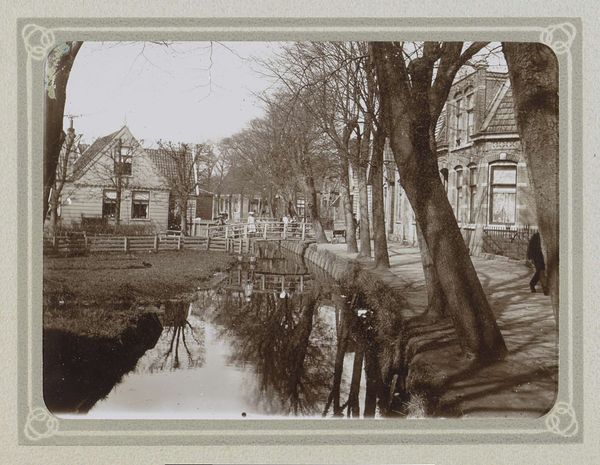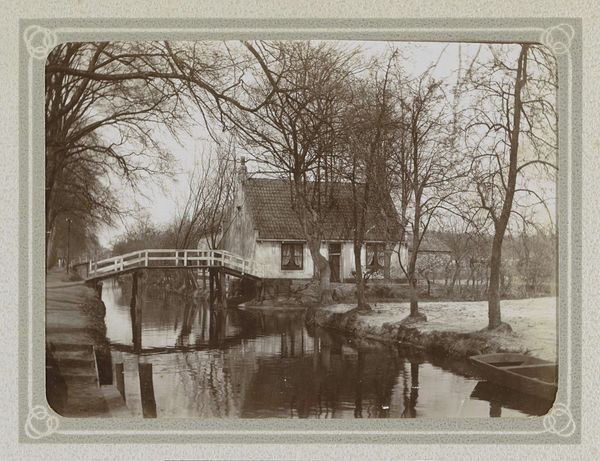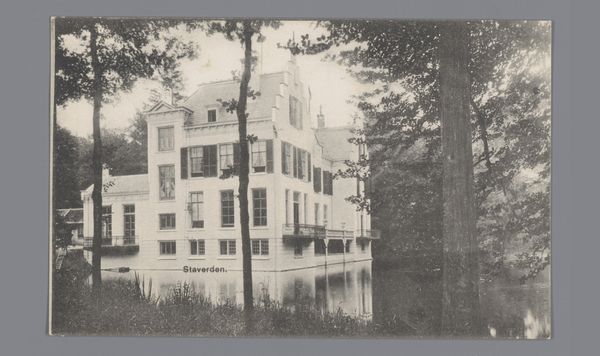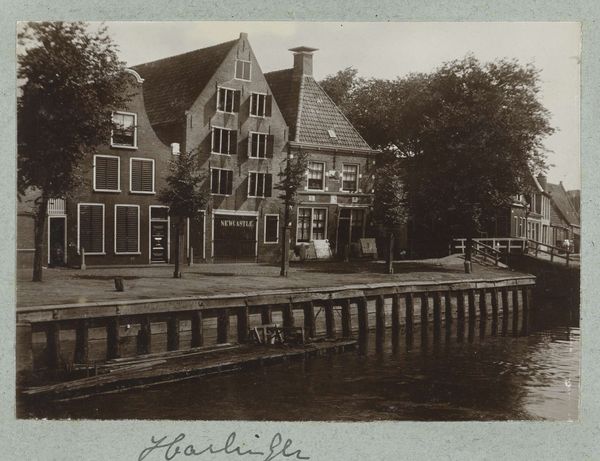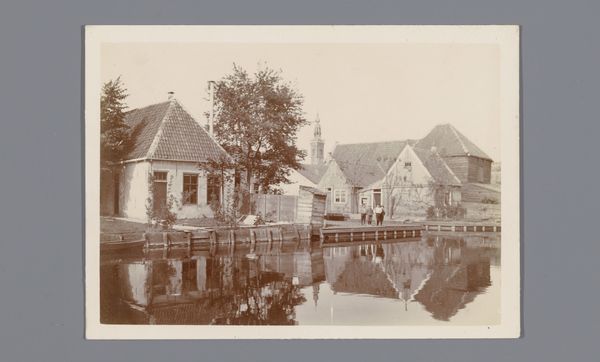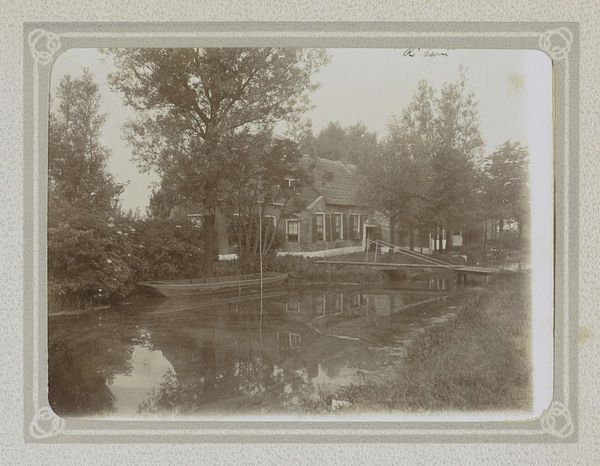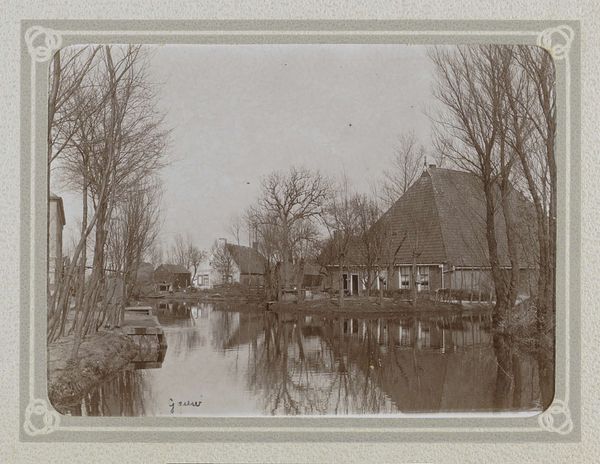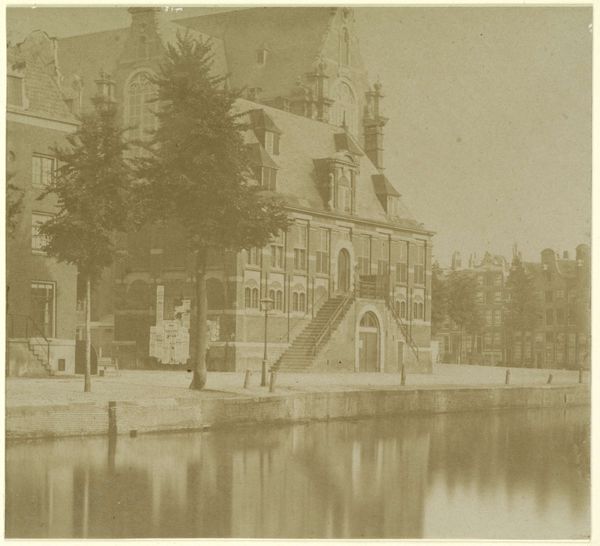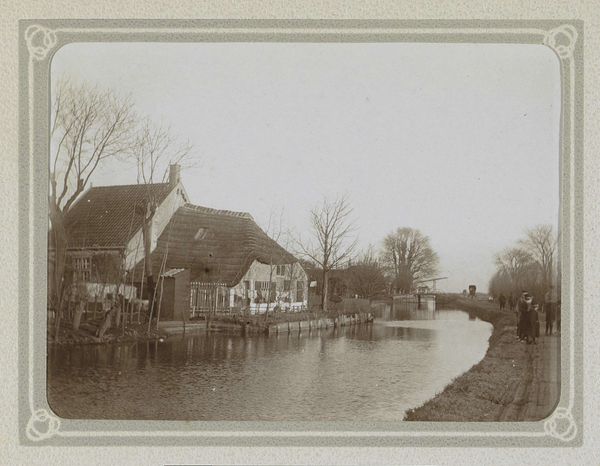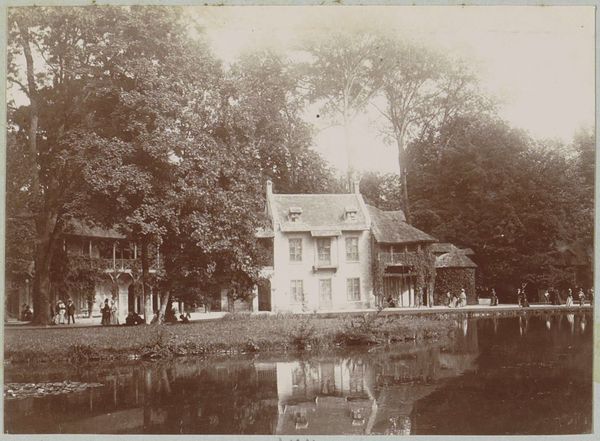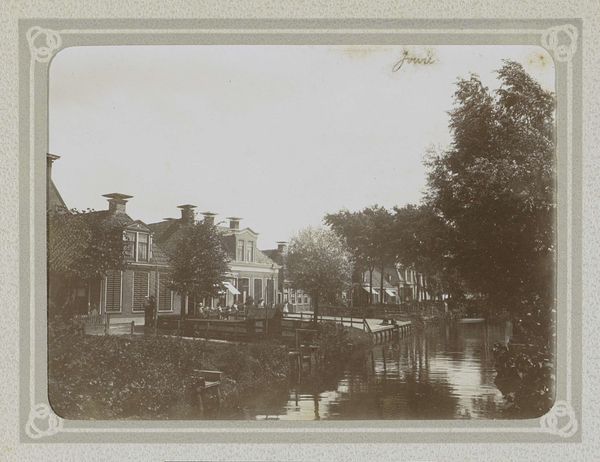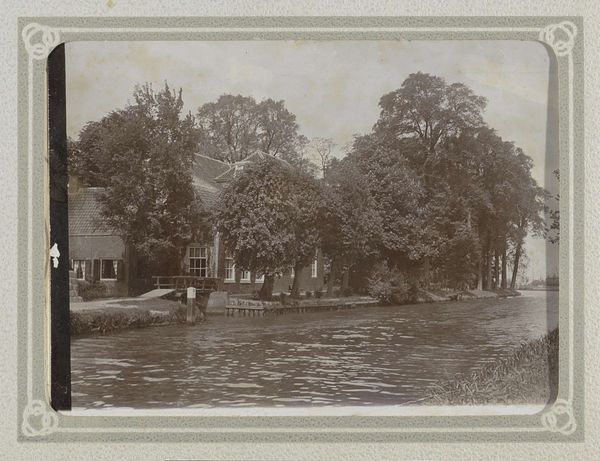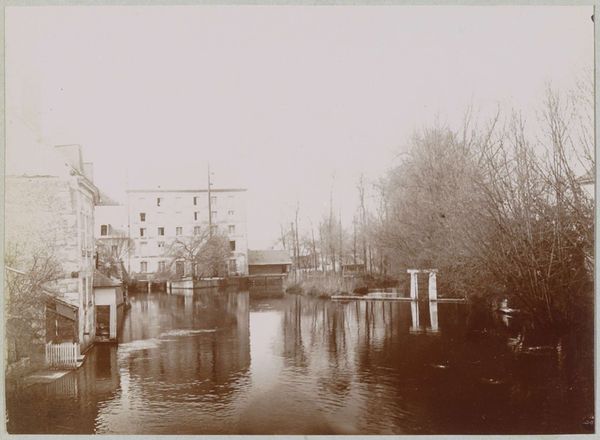
daguerreotype, photography
#
dutch-golden-age
#
landscape
#
daguerreotype
#
outdoor photography
#
photography
#
realism
Dimensions: height 83 mm, width 105 mm
Copyright: Rijks Museum: Open Domain
Curator: This is "Gezicht op huis Oudaan langs de Vecht," a daguerreotype made circa 1853-1854 by Eduard Isaac Asser. Editor: It’s melancholic, wouldn’t you agree? That sepia tone washes over everything, softening what would otherwise be very sharp, architectural lines. The bare tree really sets the tone; winter is coming. Curator: Or perhaps the photo was taken just before spring. What strikes me is Asser's technical mastery. Daguerreotypes were revolutionary, but challenging. Here, he's captured intricate details—the brickwork, the window panes, the ripples on the Vecht—with incredible precision for the era. We have to remember how groundbreaking photography was as a social force; the possibility to preserve and propagate likeness at an unprecedented scale really disrupted traditional systems of power that regulated visibility. Editor: Absolutely. And the choice of subject, too – this stately home. Who occupied it, what was their relationship to the surrounding landscape? The built environment speaks volumes about social stratification and ownership. I think it speaks of a kind of ownership narrative rooted in the landed gentry. Curator: Exactly. The Oudaan estate represents a certain segment of Dutch society at the time, reinforcing class structures. While it’s tempting to idealize these images of Dutch landscapes as national idylls, it is crucial to consider it critically: who benefitted from that idyllic image, and who was left out? Early photography had a powerful democratizing potential but was almost exclusively leveraged in benefit of those in positions of power. Editor: And considering the Vecht, the river. Historically, waterways have always served as both connectors and dividers. Who had access to the river for commerce, transportation, and leisure versus who was excluded. Thinking about accessibility here invites us to interrogate the intersections of social class, environmental control, and early photographic practice. Curator: This photograph, therefore, becomes a window into more than just a picturesque landscape. It captures social and economic forces at work during the mid-19th century. Editor: Seeing through that lens, it takes on a new depth, doesn’t it? Curator: It truly does; the stillness of the scene belies the complexities of the world it reflects.
Comments
No comments
Be the first to comment and join the conversation on the ultimate creative platform.

